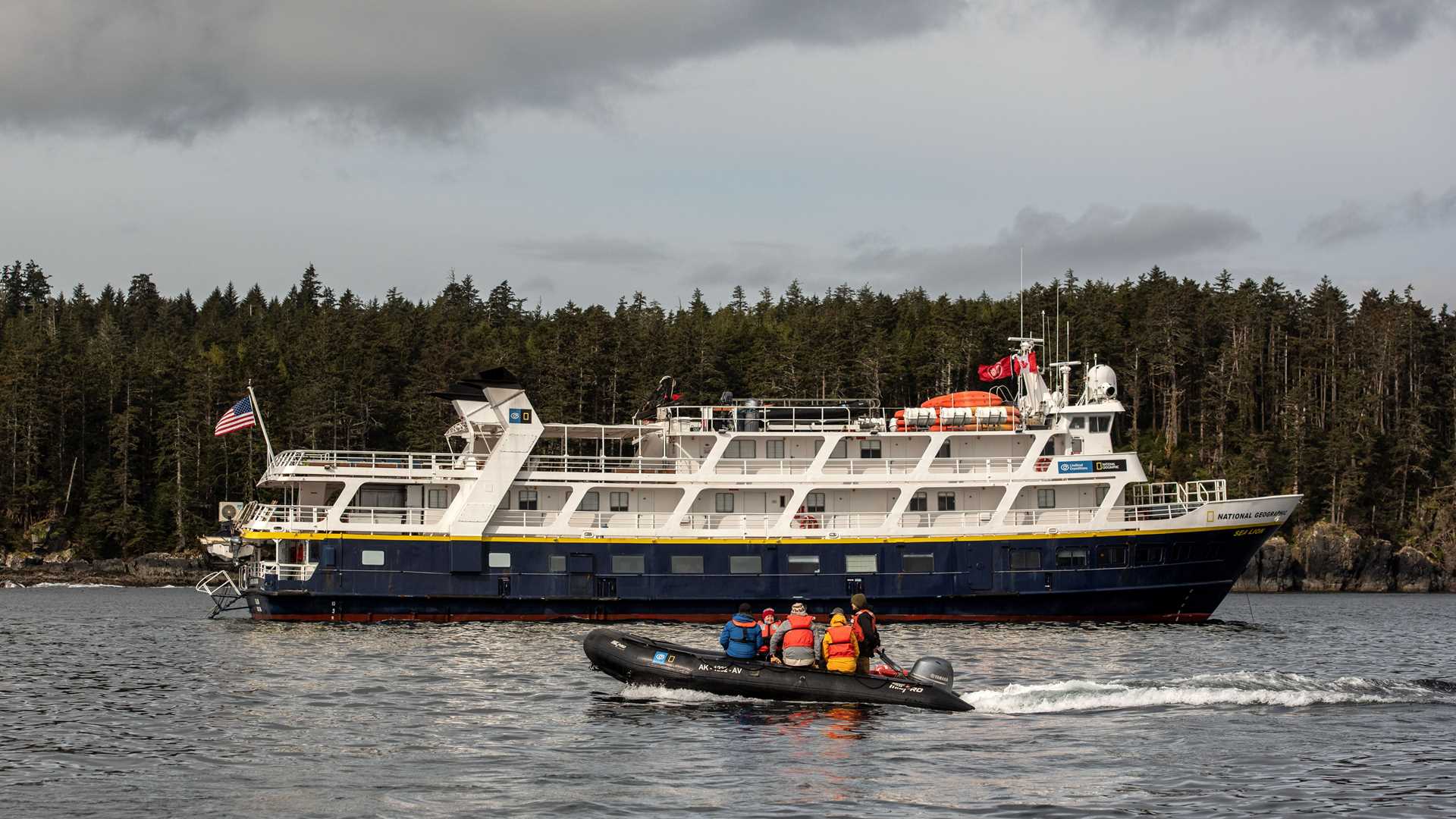National Geographic Sea Lion rounded a small point heading through Houston Stewart Channel, cutting past several small islands and eventually coming out to face Anthony Island and the village of S’Gang Gwaay. Anthony Island is the most southern and western point of our visit to Haida Gwaii, and the swell of the Pacific Ocean was felt on the Zodiacs and on the ship as she rocked in the low swells coming in from the ocean.
After dropping off our Zodiacs, we were offered a chance to do a long, brisk tour along the eastern side of Anthony Island. To the north are well-known puffin nesting areas, although upon our arrival we found that the puffins have not yet returned to their summer nesting sites. To the south were haul out spots for Steller sea lions. As we approached, we heard the roar of these very large pinnipeds as they began guarding their territory against our incoming Zodiacs.
Just before lunch, we gathered again for another Zodiac ride, this one bringing us ashore onto Anthony Island for a short photo walk. A small group of us spent a lovely hour learning the many different ways to make images out of this truly beautiful and magical place, which was preserved as a World Heritage Site by UNESCO on November 27, 1981. We also learned that the totem poles we were spending the day with were largely mortuary poles, honoring the ancients of this site.
S’Gang Gwaay, or Ninstints, is the most secluded and protected of all the Haida village sites. The name Ninstints was actually a European corruption of the name of the head chief of the village, Nan stins (“He who is two”). The Haida name for the village was Squa’ngwa-l Inaga’l, or Red Cod Island Town.
In the afternoon, we were divided into small groups and escorted through the village site by Haida watchmen. Each group spent about an hour with the Haida watchmen who opened up the storybook that each pole at the site represents. During our voyage, we have been honored to travel with guest speaker Jim Thomas, a headman from the village of Yakutat in southeast Alaska. Jim is a Tlingit orator, fluent in his own language. He came ashore with his Tlingit regalia and drum and immediately saw that he needed to “address the ancients.” He brought out his drum and sang a welcoming song to the Haida present, translating the Tlingit words he sang, “I am respecting your face and acknowledging each of you.” He then turned to the poles and began singing a mourning song, addressing the ancients and showing respect for their journey to the other side. He explained that the poles represent a connection to the ancients for Indigenous Peoples…his drum echoed through the open area where the poles stood…then his songs carried out over the water as he continued to address the ancients with respect and acknowledgement, as is a continuous tradition that continues to this day. Birds could be heard in the forest behind the poles and village site. A bald eagle called out, a raven flew by using its trickster voice. All beings were acknowledging each other as is the way in the Northwest Coast among its First Nations.
Returning to National Geographic Sea Lion in the afternoon sun, we gathered in the lounge for recap and reflection upon a truly magical day. Looking out the window, Nick, one of our staff members, saw huge splashes some distance away….a massive group of Pacific white-sided dolphins were leaping, diving, and moving rapidly through the water….as the sun moved towards sunset, a final gift on a phenomenal day of gifts from the seen and unseen world.







